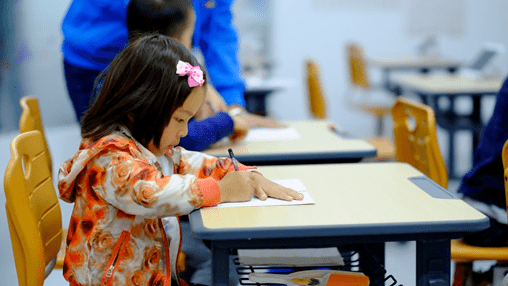Training Teachers On the Science of Reading: How Do Teachers Really Feel?
It takes a lot to teach a child how to read. Pile on mandatory training requirements to any teacher’s workload, and educators are bound to feel overwhelmed - particularly in the aftermath of virtual learning loss. On-the-ground reflections from Utah educators give U.S. teachers - and parents - an insight into the teacher side of science of reading training, and how this training is affecting U.S. classrooms in real-time.

In Utah, KUER Public Radio recently interviewed third grade teacher Cassie White, who initially felt that her school district’s new teacher training requirement would be a “waste of time.” Yet to White’s surprise, Language Essentials for Teachers of Reading and Spelling (LETRS) provided her science of reading-approved lessons that she could immediately implement in her classroom, along with research-driven training videos and reading tests. White’s school, Centennial Elementary, mandated a new teacher training program in January 2021; the science of reading-approved materials were intended to boost reading scores, noting that approximately 25% of the district’s students read below grade level reading milestones. While it’s difficult to quantify the impact of teachers’ LETRS training on their students’ reading outcomes, White says that her students are making visible progress: around three-quarters of her class achieved above or above-average growth on their 2021 end-of-the-year reading tests.
In spite of these anecdotal achievements, it’s important to note that retraining teachers on the science of reading - and tracking long-term student reading progress - will take time, effort, buy-in from educators, and, inevitably, money. Utah used a portion of its 2021 federal COVID funding to retrain 8,000 teachers with LETRS, and the state will allocate an additional $20 million this year. In addition to basic training on the science of reading, federal funding for states who are recommitting to students’ literacy success will fund more literacy coaches in classrooms, as well as the process of gathering experts to oversee and evaluate the overall success of science-driven reading curricula.

Fundamentally, LETRS and other science of reading programs recognize the importance of breaking down words and linking letters to their sounds. These programs redirect focus to the 3 elements of a word: sound (phonemes), letters and letter combinations (graphemes), and the overall meaning. As invaluable as phoneme-grapheme mapping activities are in the classroom, teachers’ newfound knowledge may not go far without opportunities to give and receive feedback on their reading instruction. This sentiment is upheld by the University of Utah Reading Clinic, which is committed to creating more spaces for teachers to learn about the science of reading and observe other trained teachers. As more states move to give teachers the knowledge they need - and desire - to improve students’ reading outcomes, recent insights from Utah-based educators remind us that we can’t simply dump knowledge of teachers and continue moving. To see true reading success in the classroom, teachers need - and deserve - opportunities to retrain on the science of reading and observe teachers in action, increasing their confidence to act on their own.

Take-Aways:
- Utah is one of 18 U.S. states that has allocated federal COVID relief funds toward retraining teachers on the science of reading.
- While some teachers express concerns about having enough time and energy to complete required trainings, many school districts report positive impacts on their reading instruction and students’ reading scores since requiring teacher training.
- In addition to LETRS and other science of reading training programs, teachers will likely need support from a combination of high-impact classroom tutors, reading coaches, and opportunities to exchange feedback with other educators.
Start Teaching Reading for Free Now!
Access Level 1’s four interactive stories and the accompanying supplemental resources to teach elementary students how to read. No credit card is needed. Join the 42,635 teachers and students using our reading program.



